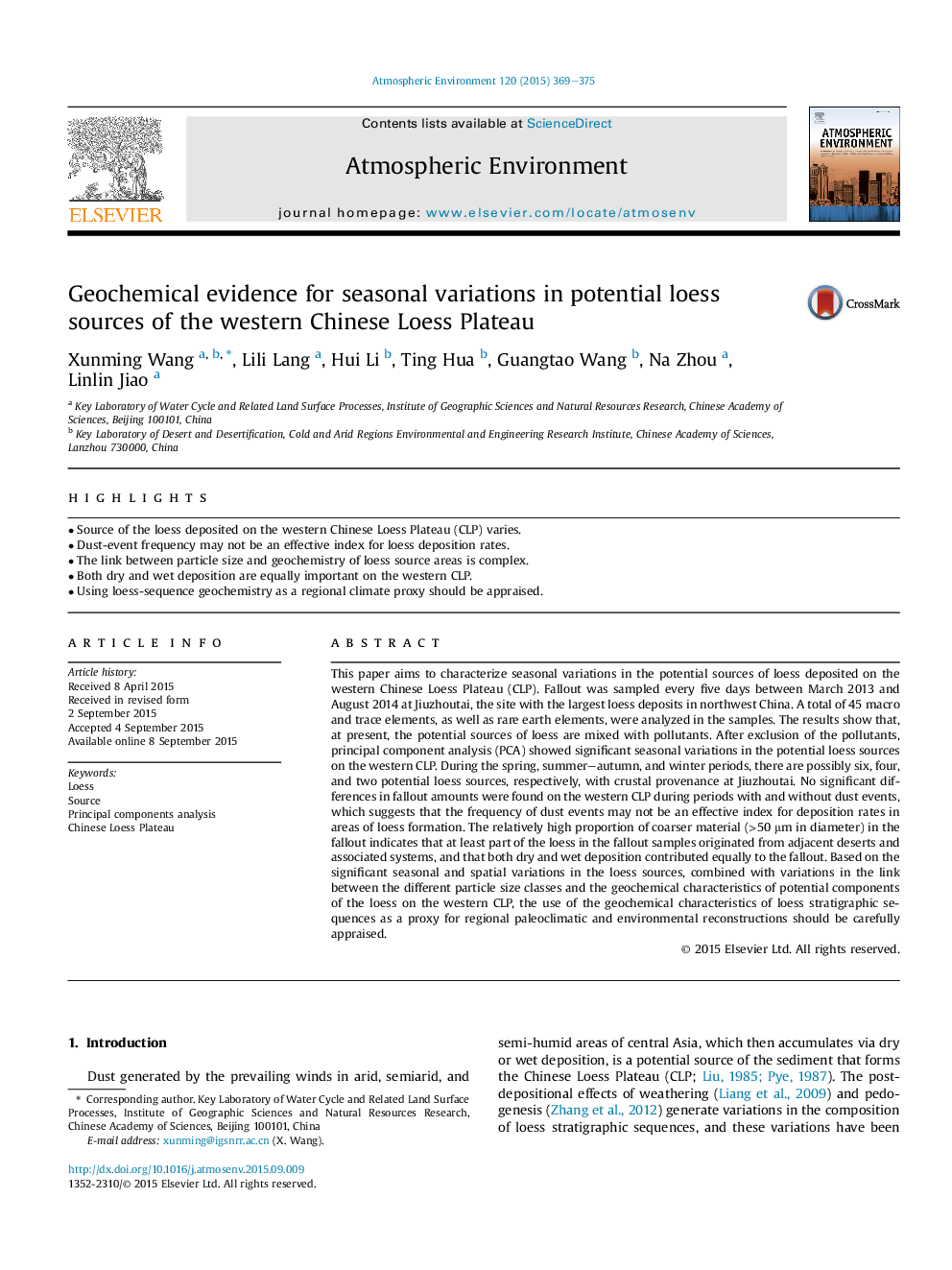| Article ID | Journal | Published Year | Pages | File Type |
|---|---|---|---|---|
| 6337366 | Atmospheric Environment | 2015 | 7 Pages |
Abstract
This paper aims to characterize seasonal variations in the potential sources of loess deposited on the western Chinese Loess Plateau (CLP). Fallout was sampled every five days between March 2013 and August 2014 at Jiuzhoutai, the site with the largest loess deposits in northwest China. A total of 45 macro and trace elements, as well as rare earth elements, were analyzed in the samples. The results show that, at present, the potential sources of loess are mixed with pollutants. After exclusion of the pollutants, principal component analysis (PCA) showed significant seasonal variations in the potential loess sources on the western CLP. During the spring, summer-autumn, and winter periods, there are possibly six, four, and two potential loess sources, respectively, with crustal provenance at Jiuzhoutai. No significant differences in fallout amounts were found on the western CLP during periods with and without dust events, which suggests that the frequency of dust events may not be an effective index for deposition rates in areas of loess formation. The relatively high proportion of coarser material (>50 μm in diameter) in the fallout indicates that at least part of the loess in the fallout samples originated from adjacent deserts and associated systems, and that both dry and wet deposition contributed equally to the fallout. Based on the significant seasonal and spatial variations in the loess sources, combined with variations in the link between the different particle size classes and the geochemical characteristics of potential components of the loess on the western CLP, the use of the geochemical characteristics of loess stratigraphic sequences as a proxy for regional paleoclimatic and environmental reconstructions should be carefully appraised.
Related Topics
Physical Sciences and Engineering
Earth and Planetary Sciences
Atmospheric Science
Authors
Xunming Wang, Lili Lang, Hui Li, Ting Hua, Guangtao Wang, Na Zhou, Linlin Jiao,
